Table of Contents
Daily Current Affairs for Government Exams:
Today Current Affairs:2nd June 2020 for UPSC IAS exams, State PSC exams, SSC CGL, State SSC, RRB, Railways, Banking Exam & IBPS, etc
Contents:
- Mudra Shishu loan
- MSP Raised for Kharif Crops:
- Ebola epidemic:
- Downgraded India’s sovereign ratings :
- Antifa in the USA:
- SPIC MACAY’s International Convention :
- Social stock exchanges:
- RT- PCR test:
- Line of Actual Control (LAC),:
- Other important current affairs
1.Mudra Shishu loan’ :

Centre has announced ‘Mudra Shishu loan’ for small businesses and cottage industries so that shopkeepers do not suffer due to the COVID-19 pandemic
- A 1500 crore interest subvention for small business and cottage industries has been announced under the Mudra Shishu loan.
- The government will offer a 2% interest rate subvention for a period of 12 months to prompt loan payees under the Mudra scheme.
- The decision is expected to bring much-needed relief to small borrowers under the Mudra Shishu loans up to ₹50,000.
- Micro Units Development and Refinance Agency (Mudra) was started to refinance loans of up to ₹10 lakh given by banks and other lending institutions to small borrowers.
- Under the scheme, a collateral-free loan of up to ₹10 lakh falls under three categories—Shishu, Kishore, and Tarun. Loans from ₹50,001 to ₹5 lakh are disbursed under Kishore. The third category is for loans of ₹5-10 lakh.
2.MSP Raised for Kharif Crops:
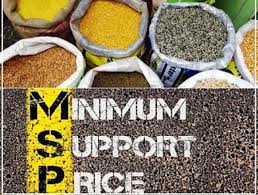
Recently, the Cabinet Committee on Economic Affairs has marginally increased the Minimum Support Price (MSP) of more than a dozen crops for Kharif Marketing Season (KMS) 2020-21.
- The MSP has been raised in the range of 2%-7.5% for the Kharif crops based on the recommendation of the Commission for Agricultural Costs and Prices (CACP).
- The increase in MSP is in line with the Union Budget 2018-19 announcement of fixing the MSPs at a level of at least 1.5 times of the all-India weighted average cost of production, aiming at reasonably fair remuneration for the farmers.
- This rise will not make much of a difference to farmers unless there is large scale government procurement in most crops at MSP.
- Kharif crops: They are the crops which are grown during the monsoon or rainy season from June to October. Examples: Paddy, Cotton, etc.
Minimum Support Price
- The MSP is the rate at which the government buys grains from farmers.
- The reason behind the idea of MSP is to counter the price volatility of agricultural commodities due to factors like the variation in their supply, lack of market integration, and information asymmetry.
- The MSP is fixed on the recommendations of the Commission for Agricultural Costs and Prices (CACP).
3.Ebola epidemic:
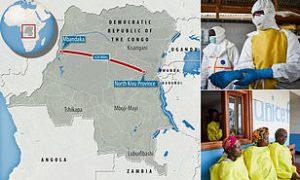
The Democratic Republic of Congo has declared a new Ebola epidemic in the western city of Mbandaka.
- The announcement comes as a long, difficult and complex Ebola outbreak in the eastern Democratic Republic of the Congo is in its final phase, while the country also battles COVID-19 and the world’s largest measles outbreak.
- This is the Democratic Republic of the Congo’s 11th outbreak of Ebola since the virus was first discovered in the country in 1976.
- The city of Mbandaka and its surrounding area were the sites of the Democratic Republic of the Congo’s 9th Ebola outbreak, which took place from May to July 2018.
- Ebola virus disease (EVD), formerly known as Ebola haemorrhagic fever, is a severe, often fatal illness in humans.
- The virus is transmitted to people from wild animals and spreads in the human population through human-to-human transmission.
- The average EVD case fatality rate is around 50%. Case fatality rates have varied from 25% to 90% in past outbreaks.
- Community engagement is key to successfully controlling outbreaks. Good outbreak control relies on case management, surveillance and contact tracing, good laboratory service and social mobilization.
- Early supportive care with rehydration, symptomatic treatment improves survival. There is yet no licensed treatment proven to neutralize the virus but a range of blood, immunological and drug therapies are under development.
- An experimental Ebola vaccine, called rVSV-ZEBOV proved highly protective against EVD in a major trial in Guinea in 2015.
- The rVSV-ZEBOV vaccine is being used in the ongoing 2018-2019 Ebola outbreak in DRC.
- Pregnant and breastfeeding women should have access to the vaccine under the same conditions as for the general population.
4. Downgraded India’s sovereign ratings :
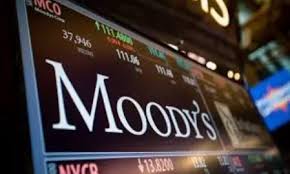
Recently, rating agency Moody’s Investors Service downgraded India’s sovereign ratings from Baa2 to Baa3.
- The ratings agency cited slow reform momentum, constrained policy effectiveness and slower growth compared to India’s potential among the reasons for the downgrade.
- Covid-19 pandemic has only amplified the vulnerabilities in India’s credit profile that were present and building prior to the shock.
- The rating has been downgraded in the context of the coronavirus pandemic, it was not driven by the impact of the pandemic.
- Baa3 is the lowest investment grade in Moody’s rating ladder.
- This means India is just one notch above the non-investment grade or junk grade.
- Moody’s had upgraded the country’s rating to Baa2 in November 2017.
- According to Moody, India’s real GDP growth rate will contract by 4% in 2020-21 due to the shock from the coronavirus pandemic and related lockdown measures.
- It expects the economy to grow 8.7% next financial year and closer to 6% in the subsequent year.
- India’s GDP growth slipped to an 11-year low of 4.2% in 2019-20.
- The fiscal deficit also expanded to 4.6% of the GDP as against the revised estimate of 3.8% of GDP in the previous financial year.
5.Antifa in the USA:
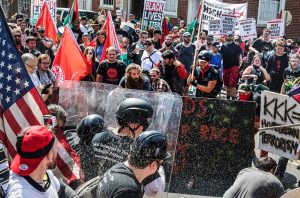
The USA is experiencing a ‘law and order’ situation due to the violent nationwide protests triggered by anger over racial inequities and excessive use of police force.
- The unrest began with peaceful protests over the death of a African-American man in police custody in Minneapolis city of USA.
- Subsequently, many cities across the USA remain under curfews at a level not seen since riots following the 1968 assassination of civil rights activist Martin Luther King Jr.
- The USA President has blamed an organisation namely, Antifa for the violent protest that erupted in the country.
- The Antifa movement gained more visibility in 2017 after a series of events that put a spotlight on anti-fascist protesters.
- It has been also argued that the USA will be designating Antifa as a terrorist organization in the future.
- Although, the USA has no statute that permits designating violent domestic groups terrorists, as it has for international groups like Islamic State or Al-Qaeda.
Antifa
- The word “Antifa” was first used in 1946, Antifa stands for “Anti-fascism”.
- The name comes from early 1930s Germany, where socialist “anti-fa” groups attempted to stand up to the rise of Adolf Hitler’s Nazis.
- Antifa was started in the Rose City Antifa of Portland, Oregon (USA) in 2007 to shut down a neo-Nazi skinhead music festival called Hammerfest.
6. SPIC MACAY’s International Convention :

Recently, the Prime Minister of India addressed the SPIC MACAY’s International Convention via video conference.
- He appreciated the new elements in the SPIC MACAY convention this year like nature walk, heritage walk, literature and holistic food along with Yoga and Naad Yoga.
- He also stated that music is strengthening the ideal of ‘Ek Bharat Shreshtha Bharat’.
- SPIC MACAY (Society for the Promotion of Indian Classical Music And Culture Amongst Youth) is a non-political, nationwide, voluntary movement founded in 1977 by Dr Kiran Seth.
- He was awarded the Padma Shri for his contribution to the arts in 2009.
- It is a participatory student movement registered under the Societies Registration Act, 1860.
- In 2011, it was awarded the Rajiv Gandhi Sadbhavana award in recognition of its contribution to youth development.
Its intention is to enrich the quality of formal education by increasing awareness about different aspects of - Indian heritage and inspiring the young mind to imbibe the values embedded in it.
- It is supported nationally by the Ministry of Culture, Ministry of Youth Affairs and Sports, and the Ministry of Human Resource Development.
- It has been organising national and international conventions for the last 35 years.
Anubhav, a week-long online project, seeks to help youngsters indulge in mystical and diverse aspects of - Indian art, culture and heritage. It is expected to reduce the stress triggered by Covid-19.
- The movement has a central executive body in New Delhi and organises its programmes through a worldwide network of schools, colleges and educational institutions.
7.Social stock exchanges:

A working group constituted by the Securities and Exchange Board of India (SEBI) on social stock exchanges has submitted its recommendations.
- The panel was set up by Sebi in September 2019 under the Chairmanship of Ishaat Hussain, Director at SBI Foundation and former Finance Director at Tata Sons, to suggest possible structures and regulations for creating SSE to facilitate listing and fund-raising by social enterprises as well as voluntary organisations.
- The idea of a social stock exchange (SSE) for listing of social enterprise and voluntary organisations was mooted by Finance Minister Nirmala Sitharaman while presenting the Union Budget 2019-20.
Key recommendations:
- Allow direct listing of non-profit organisations through the issuance of bonds and a range of funding mechanisms.
- Funding mechanisms suggested include some of the existing mechanisms such as Social Venture Funds (SVFs) under the Alternative Investment Funds.
- A new minimum reporting standard has also been proposed for organisations which would raise funds under social stock exchanges (SSE).
- Profit social enterprises can also list on SSE with the enhanced reporting requirement.
- To encourage, giving culture some tax incentives have also been suggested.
The Social stock exchange (SSE):
- It a novel concept in India and such a bourse is meant to serve private and non-profit sector providers by channelling greater capital to them.
- SSE can be housed within the existing stock exchange such as the BSE and/or National Stock Exchange (NSE).
- This will help the SSE leverage the existing infrastructure and client relationships of the exchanges to onboard investors, donors, and social enterprises (for-profit and non-profit).
8. RT- PCR test:

Bombay High Court has said all frontline workers, including those who are asymptomatic, in hospitals and containment zones in Vidarbha shall be entitled to be tested for COVID-19 using RT-PCR (Rapid Antibody and Reverse Transcription Polymerase Chain Reaction) method.
- It was announced based on a public interest litigation (PIL) seeking these tests on medical staff, police personnel and others working with COVID-19 patients.
- Frontline workers, including doctors, nurses, police personnel, and sanitation workers are performing a “herculean” task by putting their lives at risk to protect the lives of others.
- They are the warriors and soldiers in this process.
- Therefore, these workers are covered under the definition of suspected cases and hence, should be tested.
- The causative agent for Covid19 is the SARS-CoV-2 virus. It is an RNA virus, that means it infiltrates a healthy cell to multiply and survive.
- Thus, the RT-PCR test is for the identification of SARS-CoV-2 RNA. In this, the RNA is converted to DNA through a process called ‘reverse transcription’ for detecting viruses.
8. Line of Actual Control (LAC),:
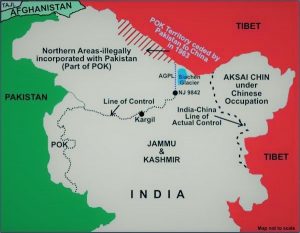
As tensions continue between India and China along the Line of Actual Control (LAC), a look at what the line means on the ground and the disagreements over it.
- The LAC is the demarcation that separates Indian-controlled territory from Chinese-controlled territory. India considers the LAC to be 3,488 km long, while the Chinese consider it to be only around 2,000 km.
- It is divided into three sectors: the eastern sector which spans Arunachal Pradesh and Sikkim, the middle sector in Uttarakhand and Himachal Pradesh, and the western sector in Ladakh.
- The alignment of the LAC in the eastern sector is along the 1914 McMahon Line, and there are minor disputes about the positions on the ground as per the principle of the high Himalayan watershed.
- The line in the middle sector is the least controversial but for the precise alignment to be followed in the Barahoti plains.
- The major disagreements are in the western sector.
- The LoC emerged from the 1948 ceasefire line negotiated by the UN after the Kashmir War.
- It was designated as the LoC in 1972, following the Shimla Agreement between the two countries.
- It is delineated on a map signed by DGMOs of both armies and has the international sanctity of a legal agreement.
- The LAC, in contrast, is only a concept – it is not agreed upon by the two countries, neither delineated on a map or demarcated on the ground.
Other important current affairs:
1. India Meteorological Department (IMD) issued the second stage Long Range Forecast (LRF) for South-West Monsoon Season rainfall.
- Each year, the India Meteorological Department (IMD) issues LRF in two stages. The first stage forecast is issued in April, while the second one in June.
- According to the Second Stage Long Range Forecast for Southwest Monsoon Season Rainfall from July to September, the country will receive a normal monsoon rainfall this year.
- The monsoon rainfall between June to September over the country would be 102 percent of its long period average which means 88 centimeters.
2. Prime Minister Modi launched the technology platform CHAMPIONS to empower MSMEs.
- CHAMPIONS stands for Creation and Harmonious Application of Modern Processes for Increasing the Output and National Strength.
- The portal is basically for making the smaller units big by solving their grievances, encouraging, supporting, helping, and handholding. It is a real one-stop-shop solution of MSME Ministry.
- This ICT based system is set up to help the MSMEs in present difficult situations and also to handhold them to become national and international champions.
- As part of the system, a network of control rooms is created in a Hub & Spoke Model. The Hub is situated in New Delhi in the Secretary of MSME’s office.
- The spokes are in the States in various offices and institutions of the MSME Ministry.
3. The Ministry of Housing and Urban Affairs has launched a Special Micro-Credit Facility Scheme – PM SVANidhi – PM Street Vendor’s Atma Nirbhar Nidhi, for providing affordable loans to street vendors.
- The vendors can avail of a working capital loan of up to Rs. 10,000, which is repayable in monthly instalments in the tenure of one year.
- On timely/ early repayment of the loan, an interest subsidy @ 7% per annum will be credited to the bank accounts of beneficiaries through Direct Benefit Transfer on six-monthly bases.
- There will be no penalty on early repayment of loans.
- The scheme provides for escalation of the credit limit on timely/ early repayment of loan to help the vendor achieve his ambition of going up on the economic ladder.
- Over 50 lakh people, including vendors, hawkers, thelewalas, rehriwala, theliphadwala etc. in different areas/ contexts are likely to benefit from this scheme.
4. A fast-moving depression in the Arabian Sea is predicted to be intensified into a severe cyclone named ‘Nisarga’.
- The name ‘Nisarga’ has been suggested by Bangladesh.
- As per the India Meteorological Department, the impact of the cyclone is likely to be felt in Maharashtra and Gujarat.
- There is a concern about the impact of the cyclonic storm on the battle against Covid-19, as the rain and flooding may set back social distancing and other necessary measures at evacuation centres, and even at some Covid-19 facilities located in low-lying areas.
- A few days back, super cyclone Amphan – one of the strongest cyclones the country has seen in the last few decades – hit West Bengal, Odisha and Bangladesh.
- Cyclone Nisarga is expected to be weaker than Cyclone Amphan in strength and intensity.
- However, in case of both the cyclones, the exceptional warm ocean temperatures seem to be behind the intense storms.
5. Ultra Swachh:
- It is a disinfection unit to disinfect a wide range of materials, including Personal Protective Equipment (PPEs), electronics items, fabrics, etc.
- Developed by DRDO.
- The system uses an advanced oxidative process comprising of multiple barrier disruption approaches using Ozonated Space Technology for disinfection.




